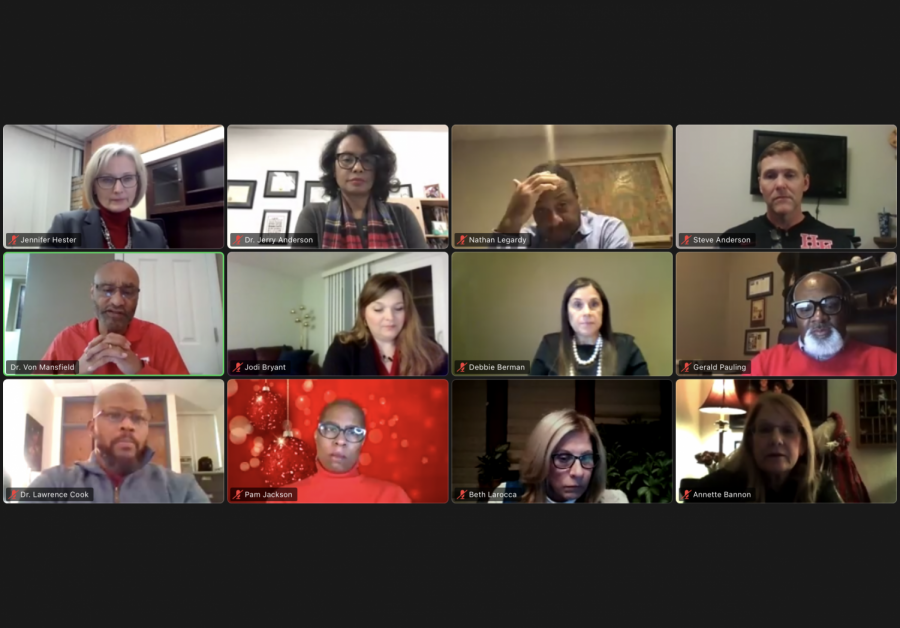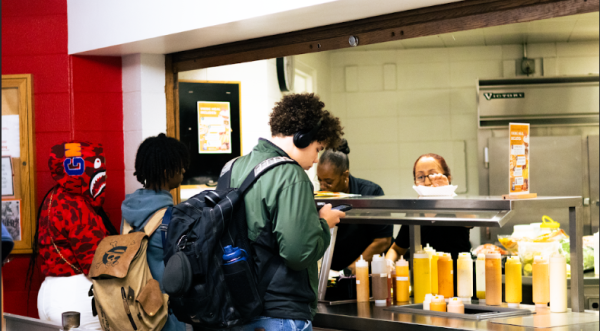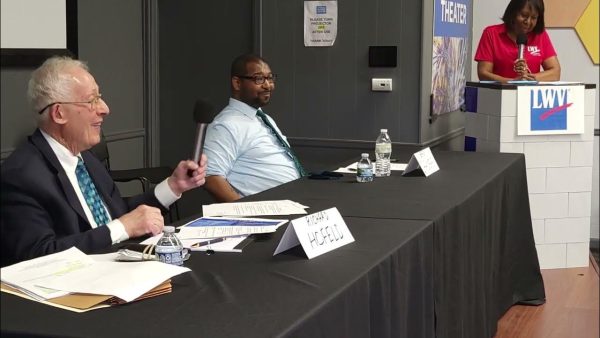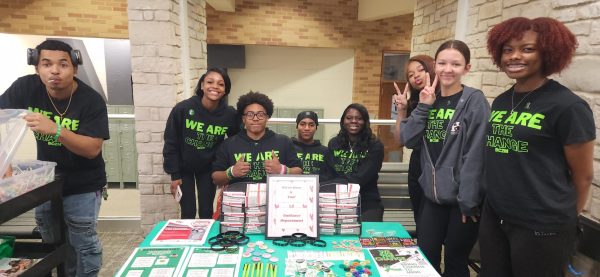Principal Introduces Revised Bell Schedule, Recovery Plans at School Board Meeting
The H-F Board held a meeting on Tues., Dec. 15 in order to discuss plans for recovery and the new class schedule for next semester.
On Tuesday, Dec. 15, H-F’s school board held a remote meeting to present a revised plan for students to return to in-person learning in second semester.
Over break, H-F administrators will continue to monitor the Covid-19 positivity rate and will reassess the ability to bring students on campus for in-person learning on Jan. 5. The school plans to reach out to families at that time.
Until further notice from the school, students will resume classes online.
In the meeting, principal Jerry Lee Anderson presented the revised schedule to the board. Eventually, in the hybrid model, all students will be in the same class at the same time, either remotely or in the classroom. The new schedule will be in effect on Jan. 5.
On Mondays, students will visit all of their classes, all of which, in the hybrid model, will be remote. The remote school day will start at 8 a.m. and end at 2:20 p.m. This will allow 30 minutes for asynchronous learning at the end of the day.

“One of the things, in comparing our current schedule and the new proposed schedule, is that Mondays are longer,” said Anderson. “Classes are 40 minutes, the asynchronous time is reduced on Monday and the number of minutes in Monday, overall, is longer.”
Then, on Tuesdays through Fridays, students will have block periods, seeing the same class only two more times in a given week.
In the proposed hybrid schedule, the entire school will be broken into quarters, with each group rotating turns on campus. One-fourth of the student body will go to school twice in one week and then do remote learning for two weeks.
The first day students are in the building, they will have periods 1-4 and then the second day students will have periods 5-7. The school day will be from 8:00 a.m. to 12:10 p.m. Students will go home for lunch and finish their school day with asynchronous learning.
In the meeting, board members expressed concerns about attendance and how students will be held accountable for participating in asynchronous learning.
“We can take attendance similar to how we take attendance on Fridays, if that’s what we choose to do,” Anderson said, addressing the board’s concerns. “This idea of requiring a student [to attend office hours] is an arrangement that [teachers] would make with that individual student and that individual student’s parents.”
School board president Steve Anderson and vice president Gerald Pauling II acknowledged the H-F staff who have been working on the plan, and reemphasized that the schedule is a “living document” and is subject to change.
Anderson then presented the school’s plan to address the increase in student failures, a problem that schools across the nation are facing.
“We have students–across all academic performance levels–who struggled in the remote learning environment,” explained Anderson while justifying the plan for recovery. “There have been so many different variables that students have dealt with from the social-emotional toll, the stress, Internet issues, and the length of time that students have been remote, so we’re giving students an opportunity to demonstrate their knowledge, while encouraging and supporting continued learning.”
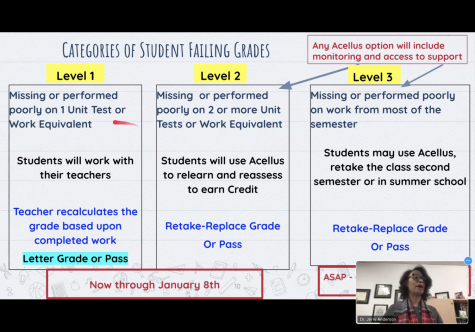
According to Anderson’s presentation, H-F’s failure rate doubled, with 1,141 failed courses compared to the 541 from the 2019-2020 school year.
In the plan detailed by Anderson, students who failed a course during the first semester will be given a chance to recover their grade.
Depending on the severity of the failure students will be divided into levels. Each tier determines the length of the students’ recovery, with level one being the quickest recovery and level three being the most extensive recovery.
“The recovery [is divided into] levels because when a student receives an ‘F’ in the class, they are not all equal; they don’t all look the same,” said Anderson.
Level 1 and 2 students will complete their recovery over winter break. Level 3 students have an individualized schedule with their counselors to complete their work when school returns in January.
Students who are in need of the recovery program will be contacted by the school with next steps.

